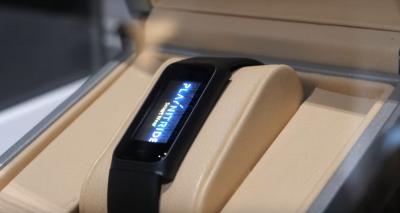In July 2019 Taiwan-based microLED developer PlayNitride raised $50 million to start trial production of microLED displays. The company now says it seeks to raise over $100 million more as it will require large funds to initiate mass production.

PlayNitride is considering several production models - from constructing its own production lines, through a joint-venture with strategic partners to the licensing of its technology. The main goal of the company is to start production as soon as possible. The company hopes mass production can begin by the end of 2020.
PlayNitride also reports that it increased its microLED chip transfer yield to 99.999% (only a few months ago it said the yields were 99.9%). The company uses a 2x2 inch transfer stamp (which causes visible square marks in its transparent displays). The company is developing a repair process that can improve the LED reliability to 100%.
PlayNitride is targeting the wearables, automotive and large-size TV markets, and is working with more than 10 potential customers. For the wearables market, the company has a strategic partnership with RiTDisplay and according to reports the two companies are in talks with Apple to supply future wearable displays. At SID DisplayWeek 2019 PlayNitride demonstrated a high-brightness, high-resolution passive-matrix wearable micro-LED display.

PlayNitride is working with both TianMa and CSoT towards automotive transparent micro-LED displays. At Displayweek Tianma demonstrated a 7.56" 720x480 (114 PPI) transparent Micro-LED prototype, which was developed together with PlayNitride on Tianma's LTPS backplanes. PlayNitride demonstrated the same display at its own booth. At the same event, CSoT showed a 3.3" transparent micro-LED prototype, also developed with PlayNitride.
In the large-size TV market, PlayNitride is reportedly supplying Samsung with the micro-LED chips and technologies used in Samsung's "consumer-level" micro-LED TVs.

